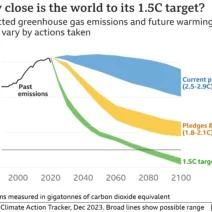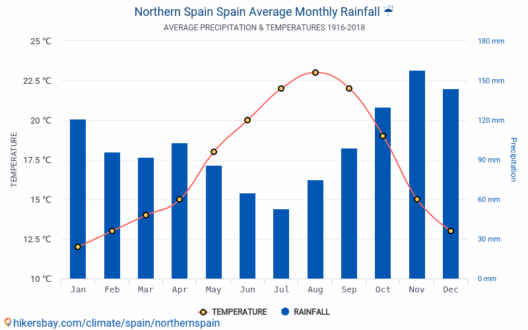As global temperatures ascend due to anthropogenic activities, understanding the nexus between technology and environmental stewardship becomes paramount. Innovations that harness technology offer a panoply of solutions aimed at mitigating the impacts of climate change. From renewable energy systems to smart infrastructures and cutting-edge carbon capture techniques, the amalgamation of these advancements presents a formidable arsenal in the fight against global warming.
One of the foremost applications of technology in combating climate change lies within the realm of renewable energy. Solar, wind, and hydroelectric power have moved into the limelight as viable alternatives to fossil fuels. The proliferation of photovoltaic cells that harness solar irradiance exemplifies how advancements in material science can yield more efficient energy production. Innovations in battery storage technology further fortify these renewable sources, enabling energy to be stored for use during periods when generation is low. For instance, lithium-ion batteries have become ubiquitous in their application, yet research into alternative storage solutions, such as flow batteries and solid-state systems, continues to unfold.
Wind energy, too, has experienced tremendous technological advancements. Modern wind turbines have evolved into towering marvels equipped with sophisticated sensors and control systems, optimizing energy capture while minimizing environmental disturbance. Additionally, offshore wind farms offer a promising avenue for energy generation. By deploying turbines in deep waters, where winds are more consistent, the potential energy yield significantly increases. These offshore innovations not only bolster energy output but also create jobs and stimulate local economies.
Hydroelectric power, while venerable, is undergoing a renaissance with the advent of small-scale and run-of-river systems. These systems minimize ecological disruption compared to traditional dam constructions, thereby maintaining the habitat integrity of surrounding ecosystems. Innovations in turbine technology have enhanced energy efficiency in these installations, enabling them to generate power more effectively while adhering to sustainable practices.
Besides energy production, technology is playing a pivotal role in enhancing energy efficiency. The advent of smart grids signifies a transformative approach to energy management. These grids utilize real-time data analytics and machine learning to optimize energy distribution and consumption. Homes equipped with smart meters can monitor energy usage, allowing occupants to adjust habits accordingly. This adaptability not only reduces emissions but also results in cost savings for consumers.
Industrial processes are notorious for their greenhouse gas emissions. However, innovations such as process optimization software and IoT (Internet of Things) devices are redefining efficiency standards. By employing real-time monitoring and predictive analytics, companies can identify inefficiencies and reformulate processes, leading to reduced waste and emissions. Furthermore, the rise of energy management platforms equips organizations with the tools necessary to track and analyze their ecological footprint meticulously.
Carbon capture, utilization, and storage (CCUS) have emerged as critical technology-driven strategies for addressing emissions from heavy industries. This multifaceted approach focuses on capturing carbon dioxide from emission sources and either reusing it or sequestering it underground. Advanced materials, like metal-organic frameworks (MOFs), demonstrate significant potential in capturing CO2 at lower energy costs, revolutionizing how industries manage their carbon outputs. As these technologies mature, they could become integral to achieving net-zero emissions targets.
Moreover, the agricultural sector is a pivotal player in the climate change saga. Precision agriculture leverages satellite imagery, drones, and artificial intelligence to enhance crop yields while minimizing resource use. By optimizing water and fertilizer application, farmers can increase productivity while decreasing emissions related to chemical usage and water extraction. These technologies not only foster sustainable agricultural practices but also promote food security in a changing climate.
Transportation, another significant contributor to greenhouse gas emissions, is undergoing a radical transformation through technological intervention. The proliferation of electric vehicles (EVs) is a prime example. Coupled with the expansion of charging infrastructure, EVs reduce dependency on fossil fuels and minimize urban air pollution. Furthermore, advancements in autonomous driving technology hold the promise of optimizing traffic flow, reducing congestion, and, consequently, emissions.
The capability of technology to address climate change extends into conservation efforts as well. Remote sensing technologies, such as satellite observations, facilitate the continuous monitoring of deforestation, ocean health, and biodiversity. This data empowers policymakers and conservationists to make informed decisions about resource allocation and environmental protection measures. Additionally, artificial intelligence models can be employed to predict environmental changes, assisting in the development of mitigation strategies before severe consequences manifest.
However, the intersection of technology and environmental sustainability raises ethical considerations that must not be overlooked. As we advance, the reliance on technology should equate to an equitable distribution of resources. Ensuring that emerging technologies are accessible to all, particularly in marginalized communities that often bear the brunt of climate change, is critical. This necessitates a concerted effort to dismantle systemic barriers and implement policies that promote inclusivity in technological advancements.
In summation, technology offers a plethora of innovative solutions with the potential to alter the trajectory of climate change. From renewable energy systems to intelligent agricultural practices and advanced carbon capture methods, the possibilities are boundless. However, the imperative to employ these technologies must coincide with equitable practices, ensuring that the benefits of innovation extend beyond select demographics. The confluence of sustainability and technology serves as the fulcrum upon which the future of our planet rests. Indeed, leveraging these advancements can pave the way for a resilient, sustainable future where human activities harmoniously coalesce with nature.








